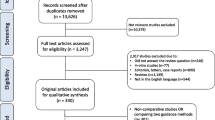Abstract
Limited data exist regarding description and technical aspects of operating room (OR) set-up, port placement, and instrument selection for robotic gynecologic oncology procedures. The objective of this manuscript and video is to show the established protocol steps at our institution for setting up a robotic hysterectomy and comprehensive lymphadenectomy (dVH-LND) for endometrial cancer. OR preparation of the robotic system prior to patient entry and set-up is demonstrated. The patient is placed in low-lithotomy on an OR table that includes a beanbag and a gel pad that is taped securely for additional stabilization. The arms/shoulders are padded to decrease injury risk and the chest is padded with foam to protect the patient from robotic arm movements. The patient is prepped widely from mid-nipple line to beyond the mid-axillary line and draped. Vaginal instrumentation includes an end-to-end anstomosis (EEA) sizer and pneumo-occluder. Port preferences, placement, and instrument selections are also demonstrated. Using a four-arm robotic system, the camera port is placed midline, approximately 20–27 cm above the pubic symphysis. Robotic ports (RP) for arms #2 and #3 are placed 8–12 cm left lateral to and 15–30° down from the camera port at approximately the level of the umbilicus. A 12 mm laparoscopic assistant port and RP#1 are placed 8–12 cm right lateral to the umbilicus and in the same position as RP#3 and #2, respectively. An additional 5 mm port is placed beneath the costal margin. This method requires only a single docking and one instrument exchange. The bedside assistant stands on the right and is essential for exposure, manipulating the uterus, passage of suture, and troubleshooting potential problems. In addition, port closure technique and methods to remove a large uterus are discussed. We have successfully completed over 70 dVH-LND for endometrial cancer using this protocol. Establishing a systematic routine for OR set-up and port placement in robotic surgery for gynecologic oncology is important for patient safety and allows for efficient use of OR time.


Similar content being viewed by others
Author information
Authors and Affiliations
Corresponding author
Electronic supplementary material
Below are the links to the electronic supplementary material.
Video 1 (14.8 mb)
Rights and permissions
About this article
Cite this article
Seamon, L.G., Cohn, D.E., Valmadre, S. et al. Robotic hysterectomy and lymphadenectomy for endometrial cancer: technical aspects and details of success—the Ohio State University method. J Robotic Surg 2, 71–76 (2008). https://doi.org/10.1007/s11701-008-0090-x
Received:
Accepted:
Published:
Issue Date:
DOI: https://doi.org/10.1007/s11701-008-0090-x




